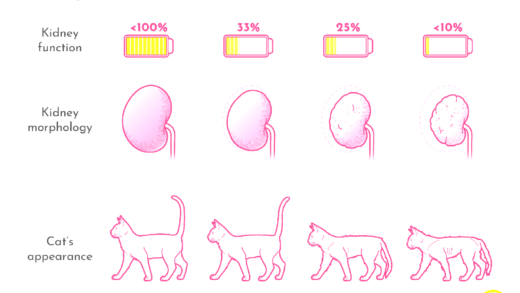Ancient Egyptian inventions included advanced farming tools, artistic techniques, and innovations in transportation. Their impact shaped future civilizations, influencing agriculture, art, and architecture worldwide. These inventions showcased their ingenuity and laid the foundation for modern practices.
Ancient Egyptian Inventions: A Brief Overview
Ancient Egyptian inventions played a crucial role in shaping the civilization’s daily life and its legacy. From architectural marvels to innovations in medicine, these inventions reflect the ingenuity of ancient Egyptians. They developed tools and techniques that not only solved immediate problems but also laid foundations for future advancements. For instance, the invention of papyrus allowed for efficient record-keeping and communication, while advances in agriculture enabled sustained food production.
- Innovative tools for farming
- Medical practices that influenced later healthcare
- Artistic techniques that defined their culture
These inventions were not just practical; they also showcased the Egyptians’ understanding of their environment, their ability to innovate, and their quest for knowledge. As we explore these inventions, we see a civilization that was both advanced and deeply connected to its surroundings.
Constructing the Great Pyramid of Giza: Secrets Revealed
The Great Pyramid of Giza, a symbol of ancient Egyptian engineering, showcases the remarkable construction techniques of its time. Built around 2580–2560 BC, it remains one of the Seven Wonders of the Ancient World. To achieve this monumental task, ancient Egyptians utilized a combination of skilled labor, innovative tools, and strategic planning.
- **Quarrying**: Large limestone blocks were quarried and transported to the site.
- **Ramp systems**: Theories suggest that ramps were used to move stones into place.
- **Precision**: The alignment and measurements were meticulously calculated, showcasing their advanced understanding of geometry.
These construction methods not only highlight the Egyptians’ architectural prowess but also their ability to organize a massive workforce. The techniques developed during this period influenced future architectural projects worldwide.
Mathematics in Ancient Egypt: The Backbone of Innovation
Mathematics in ancient Egypt was foundational to their advancements. The Egyptians employed basic arithmetic and geometry, which were essential for various tasks, including land measurement, construction, and trade. Their mathematical system included:
- **Fractions**: Used for practical calculations in trade and agriculture.
- **Geometry**: Applied in the construction of pyramids and other structures.
- **Calendrical calculations**: Essential for agriculture and religious festivals.
This mathematical knowledge was not merely theoretical; it had practical applications that supported their economy and society. The use of mathematics in engineering and agriculture laid the groundwork for future civilizations, demonstrating the profound impact of ancient Egyptian innovations on the world.
The Hieroglyphic Writing System of Ancient Egyptians
The ancient Egyptian writing system, known as hieroglyphics, was a crucial invention that facilitated communication and record-keeping. Hieroglyphics combined logographic and alphabetic elements, allowing the Egyptians to convey complex ideas through a series of symbols. This system was not just a means of communication; it was an art form that decorated temples, tombs, and monuments. Hieroglyphics were primarily used for:
- **Religious texts**: Inscribed on walls to honor gods and guide the dead.
- **Administrative records**: Documenting trade, taxes, and laws.
- **Literature**: Storytelling and poetry that captured their culture.
Understanding hieroglyphics was essential for anyone involved in governance or religion. The invention of this writing system allowed for the preservation of knowledge and culture, influencing subsequent civilizations, including the Greeks and Romans. As we examine this remarkable writing system, we see how it underpinned the complexity of ancient Egyptian society.
Papyrus: The Versatile Paper of the Nile
Papyrus, made from the pith of the papyrus plant, was an essential invention in ancient Egypt, serving as the primary writing material. This innovation revolutionized record-keeping and communication. Papyrus was lightweight, durable, and easier to produce than clay tablets or stone inscriptions. Its uses included:
- **Documents**: Legal contracts, administrative records, and letters.
- **Religious texts**: Sacred writings that were crucial for rituals and funerary practices.
- **Literary works**: Poetry, stories, and historical accounts that have survived through centuries.
The production of papyrus not only stimulated the economy but also fostered literacy. This material allowed the ancient Egyptians to document their achievements, beliefs, and daily life, solidifying their legacy for future generations.
Ancient Egyptian Medicine: Health Practices and Innovations
Ancient Egyptian medicine was remarkably advanced for its time, showcasing a deep understanding of health and healing. The Egyptians employed various practices that laid the groundwork for modern medicine. They utilized a combination of natural remedies, surgical procedures, and spiritual healing. Key aspects of their medical knowledge included:
- **Herbal remedies**: Using plants like garlic and onion for their healing properties.
- **Surgery**: Performing procedures such as trepanation to treat head injuries.
- **Medical papyri**: Texts documenting ailments and treatments, reflecting their empirical observations.
These practices illustrated a holistic approach to health, considering both physical and spiritual well-being. The advancements in ancient Egyptian medicine not only influenced their society but also had a lasting impact on subsequent medical practices in other cultures.
Farming Tools and Techniques: Agriculture in Ancient Egypt
Ancient Egyptian inventions included numerous farming tools that significantly impacted agricultural productivity. These tools revolutionized the way Egyptians cultivated their land and sustained their society. Key tools included:
- **Sickle**: Used for harvesting crops, allowing for quicker and more efficient collection of grains.
- **Plough**: Made from wood, it was essential for turning the soil and preparing fields for planting.
- **Shaduf**: A hand-operated device used to lift water from the Nile, crucial for irrigation.
These innovations not only increased crop yields but also supported a growing population. The Egyptians’ ability to farm effectively allowed for surplus food, which enabled them to develop complex societies and focus on arts and sciences. This mastery of agriculture laid the groundwork for their economic stability and cultural achievements.
Artistic Techniques in Ancient Egyptian Art and Architecture
Ancient Egyptian art and architecture are renowned for their distinct styles and techniques. The Egyptians employed a variety of artistic methods that allowed them to create enduring works. Key artistic techniques included:
- **Fresco painting**: Used to decorate tombs and temples with vibrant colors and intricate designs.
- **Sculpture**: Carving figures from stone, often depicting gods, pharaohs, and everyday life.
- **Hieroglyphics**: Combining art with writing, these symbols conveyed stories and religious beliefs.
These artistic innovations reflected their beliefs, values, and social structures. The grandeur of their architecture, such as temples and pyramids, showcased their engineering skills and commitment to the afterlife. This artistic legacy continues to influence modern art and architecture.
Innovations in Transportation: The Ancient Egyptian Way
Ancient Egyptians made significant advancements in transportation, crucial for trade and communication. Their innovations included:
- **River boats**: Designed for navigating the Nile, these boats facilitated trade and transport of goods.
- **Chariots**: Introduced for military purposes, enhancing their capabilities in warfare.
- **Road construction**: Building pathways that connected cities, improving overall travel efficiency.
These innovations in transportation not only boosted trade but also allowed for the exchange of ideas and culture. The ability to move goods and people effectively contributed to the expansion of their civilization and its influence on neighboring regions.
Lasting Impact: How Ancient Egyptian Inventions Shaped Future Civilizations
Ancient Egyptian inventions laid the groundwork for future civilizations across the globe. Their innovations in agriculture, art, and transportation influenced various cultures and societies. Key impacts include:
- **Agricultural techniques**: Techniques developed by the Egyptians were adopted by neighboring regions, enhancing their farming practices.
- **Artistic expression**: Their unique art styles inspired Greek and Roman artists, preserving their legacy through the ages.
- **Architectural principles**: The construction methods used in building pyramids and temples influenced architectural designs worldwide.
Understanding the impact of ancient Egyptian inventions highlights their role in shaping human history. These innovations not only addressed immediate needs but also fostered the development of complex societies and laid the foundation for future advancements in numerous fields.





Comments are closed.